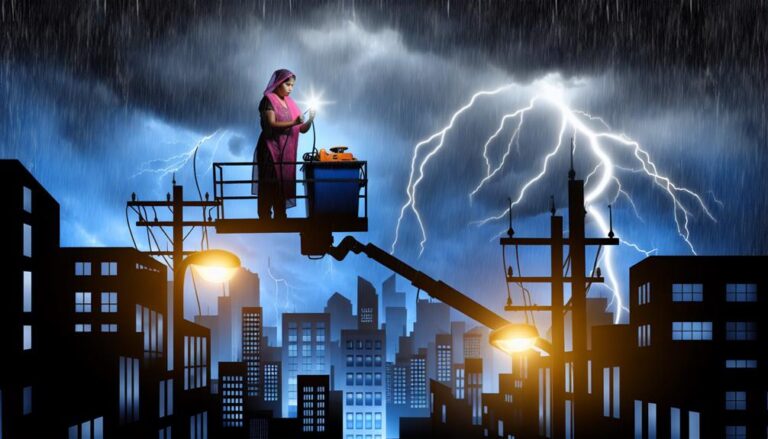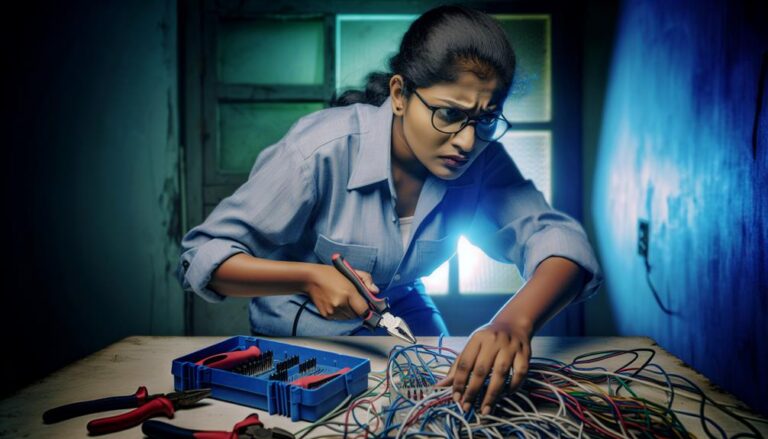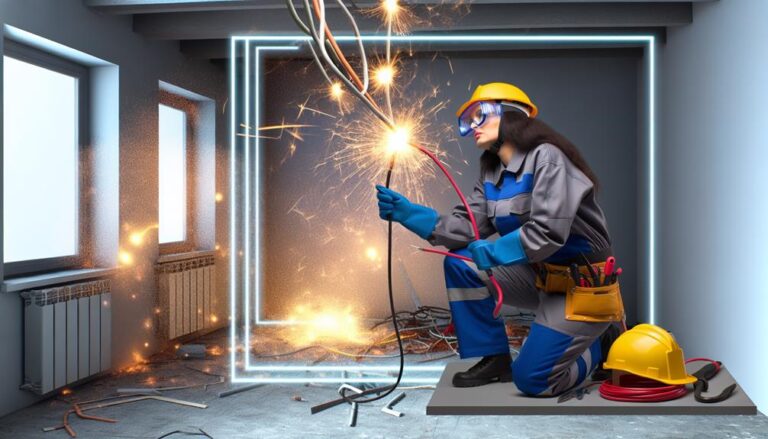What to Expect During an Emergency Electrical Service Call
When it comes to an electrical emergency, it’s as if the world suddenly flips upside down. The lights flicker, the power goes out, and panic sets in. But fear not, for help is just a phone call away.
As you anxiously dial the emergency electrical service provider, wondering what will happen next, you can rest assured that a professional electrician will soon be on their way to save the day. But what exactly can you expect during this crucial time?
Well, let’s just say that it’s not your average service call.
Key Takeaways
- Promptly contact the designated service provider for electrical emergencies
- Prepare for the electrician’s arrival by clearing the area and gathering relevant information
- Prioritize safety by assessing the extent of the damage and turning off the main power supply if necessary
- During the electrician’s inspection, expect a thorough examination of the electrical panel, circuits, and outlets, followed by a detailed diagnosis and recommended repairs
Contacting the Emergency Electrical Service Provider
When in need of emergency electrical services, it’s crucial to promptly contact the designated service provider. Time is of the essence when dealing with electrical emergencies, as they can pose serious risks to your safety and property.
The first step is to locate the contact information for the emergency electrical service provider in your area. This information can usually be found on their website or in the local directory. Once you have the contact details, make sure to have them readily available, such as saving their number in your phone or keeping it in a visible place.
When you make the call, be prepared to provide relevant information about the nature of the emergency. This may include details about any visible damage, unusual sounds, or electrical hazards. The emergency electrical service provider will then assess the situation and dispatch a qualified technician to your location as quickly as possible.
It’s important to remain calm and follow any instructions provided by the service provider, as they’re trained to handle emergency situations safely and efficiently.
Preparing for the Electrician’s Arrival
To ensure a smooth and efficient process upon the electrician’s arrival, it’s important to make necessary preparations beforehand. By taking these steps, you can help expedite the resolution of your electrical emergency.
Firstly, make sure to clear the area around the electrical panel and any other electrical equipment that needs attention. This will allow the electrician to work safely and efficiently.
Additionally, gather any relevant information about the issue you’re facing. Be prepared to provide details such as when the problem started, any unusual sounds or smells associated with it, and any troubleshooting steps you may have already taken. This information will help the electrician diagnose the problem more quickly.
Furthermore, locate the electrical panel in your home and ensure that it’s easily accessible. The electrician may need to inspect or reset circuit breakers or fuses, so having clear access to the panel will save time.
Lastly, if possible, turn off any affected circuits before the electrician’s arrival to prevent further damage or safety hazards.
Assessing the Electrical Emergency
Before the electrician arrives, it’s essential to assess the electrical emergency to determine the severity and potential risks involved. Taking the time to evaluate the situation will help you provide accurate information to the electrician, enabling them to address the issue more effectively.
Here are three key factors to consider when assessing the electrical emergency:
- Identify the source of the problem: Look for signs of damage or malfunction, such as charred wires, tripped circuits, or flickering lights. By locating the source, you can provide the electrician with valuable information to expedite the repair process.
- Evaluate the extent of the damage: Assess the impact of the electrical emergency on your home or business. Determine if the issue is isolated to a specific area or if it affects the entire property. This evaluation will help the electrician plan their approach and bring the necessary equipment to resolve the problem.
- Consider potential safety hazards: Take note of any immediate dangers, such as exposed wires or overheating electrical equipment. If there’s a risk of fire or electrical shock, prioritize safety by turning off the main power supply and evacuating the area until the electrician arrives.
The Electrician’s Inspection and Diagnosis
During their inspection, the electrician will carefully assess the electrical system to diagnose the root cause of the emergency. This crucial step involves a systematic and methodical approach to identify any faults or malfunctions in the system.
The electrician will start by visually inspecting the main electrical panel, checking for loose connections, damaged wiring, or any signs of overheating. They’ll also inspect all circuit breakers, fuses, and electrical outlets to ensure they’re functioning correctly.
Using specialized tools such as voltage testers and circuit analyzers, the electrician will measure electrical currents and voltages to pinpoint any abnormalities. They’ll test each circuit individually to identify any short circuits, ground faults, or other electrical issues. This comprehensive evaluation will help the electrician pinpoint the exact location and cause of the emergency.
Once the root cause is identified, the electrician will explain the findings to you in clear and concise terms. They’ll provide a detailed diagnosis and recommend the necessary repairs or replacements to ensure the safety and functionality of your electrical system. This transparent communication will empower you to make informed decisions regarding the necessary actions to resolve the emergency.
Taking Preventive Measures for Future Emergencies
To prevent future emergencies, it’s essential to implement proactive measures that address potential electrical issues before they become major problems. By taking preventive measures, you can ensure the safety and efficiency of your electrical system, minimizing the risk of emergencies and costly repairs.
Here are some key steps you can take:
- Regular Inspections: Schedule regular inspections by a qualified electrician to identify and address any potential issues before they escalate. These inspections can help detect faulty wiring, outdated equipment, or overloaded circuits that may pose a risk.
- Upgrading Wiring: Consider upgrading your electrical wiring if it’s outdated or worn out. Old wiring can lead to electrical fires and other hazards. Upgrading to modern, safer wiring systems can provide peace of mind and improve the overall safety of your home.
- Surge Protection: Install surge protectors to safeguard your electrical devices and appliances from power surges. Power surges can damage your equipment, leading to costly replacements. Surge protectors help regulate the voltage and prevent damage caused by sudden electrical spikes.
© 2025 By Electrician Phoenix





